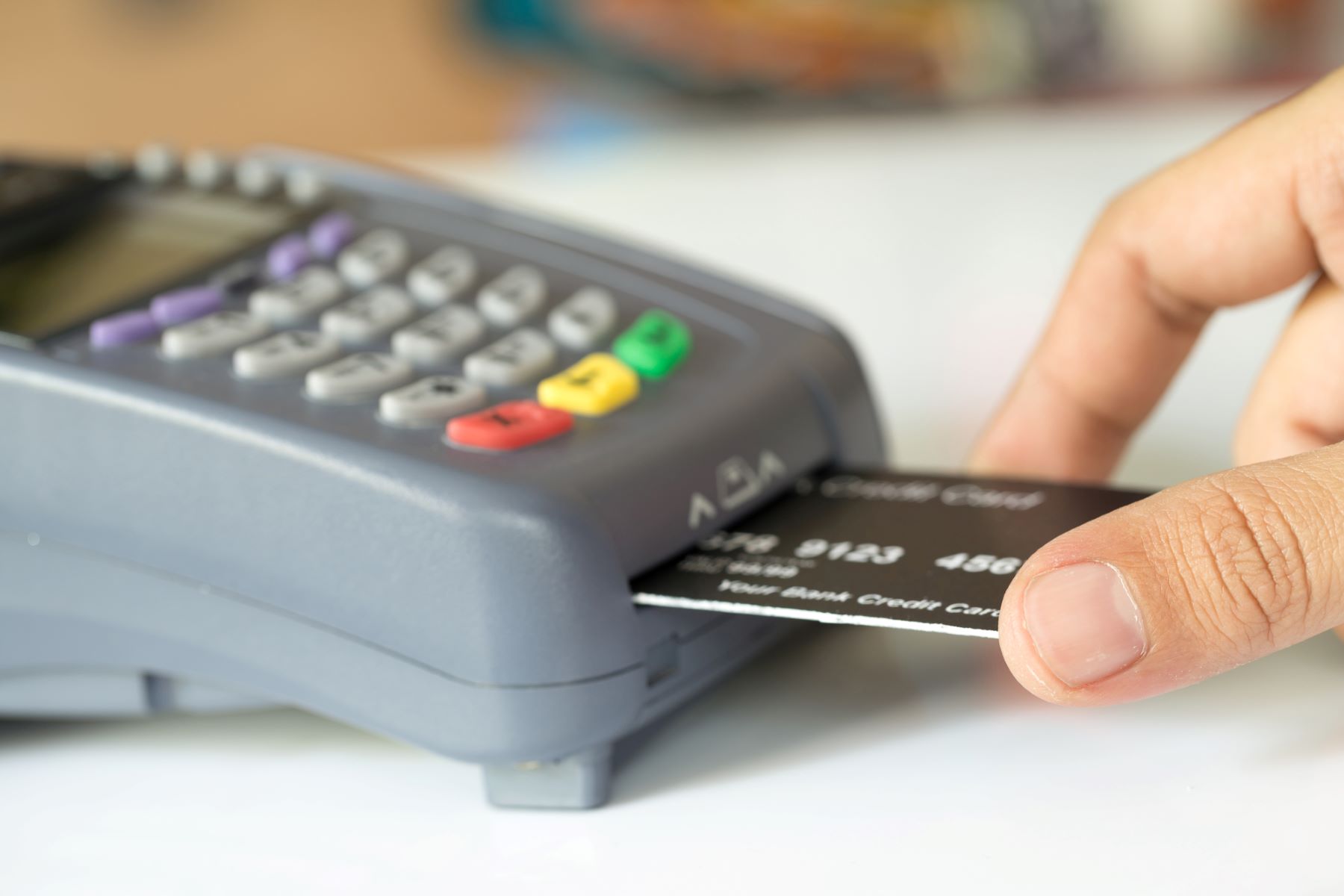

Finance
When Does Credit Card Limit Reset
Modified: March 10, 2024
Discover when your credit card limit resets and plan your finances accordingly. Stay ahead of your spending with our expert tips and strategies.
(Many of the links in this article redirect to a specific reviewed product. Your purchase of these products through affiliate links helps to generate commission for LiveWell, at no extra cost. Learn more)
Table of Contents
Introduction
When it comes to managing credit cards, understanding your credit card limit is crucial. Your credit card limit represents the maximum amount of money that you can borrow from the card issuer. It is an important factor that determines your purchasing power and can impact your overall financial health.
In this article, we will delve into the concept of credit card limits and explore the intricacies of when and how they reset. We will shed light on the different dates and cycles involved in the credit card billing process, such as the statement date, due date, and most importantly, the credit card limit reset date. Understanding these dates is crucial for effectively managing your credit card and optimizing your spending.
By knowing when your credit card limit resets, you can plan your purchases, track your spending, and even leverage the available credit to your advantage. Whether you’re a seasoned user or just starting to build your credit history, this article will provide you with the insights you need to make informed financial decisions.
Understanding Credit Card Limits
A credit card limit is the maximum amount of money that you can borrow from your credit card issuer. It is essentially a spending cap imposed on your account to ensure responsible credit card usage. The credit card limit is determined by various factors, including your credit history, income, and creditworthiness.
When you apply for a credit card, the card issuer assesses your financial background and assigns you a credit card limit. This limit serves as a safeguard for both you and the card issuer. It prevents you from overextending your credit and helps the issuer manage the risk associated with lending money.
It’s important to remember that your credit card limit is not the same as your available credit. Your available credit is the remaining portion of your credit card limit that you have not yet utilized. For example, if your credit card limit is $5,000 and you have used $2,000, your available credit would be $3,000.
Your credit card limit can dictate your purchasing power and impact your credit utilization ratio. This ratio is calculated by dividing your credit card balance by your credit card limit. A low credit utilization ratio is generally seen as favorable and can positively impact your credit score.
It’s worth noting that credit card limits are not fixed and can be adjusted over time. Card issuers may periodically review your account and may increase or decrease your credit card limit based on factors such as your payment history and creditworthiness. In some cases, you may also have the option to request a credit limit increase.
Understanding your credit card limit is essential for managing your finances effectively. It helps you stay within your means, avoid overspending, and maintain a healthy credit score. By being aware of your credit card limit, you can make informed decisions about your purchases and strive for financial stability.
Billing Cycle
The billing cycle is a crucial aspect of credit card usage that determines the timeframe in which your transactions are recorded for billing purposes. It typically lasts for about 30 days, but the specific duration can vary depending on the card issuer.
During the billing cycle, all the purchases, cash advances, and balance transfers made on your credit card are accumulated and recorded by the card issuer. At the end of the billing cycle, a statement is generated, detailing all the transactions and the total amount owed.
It’s important to keep track of your billing cycle as it sets the foundation for managing your credit card expenses. By understanding when your billing cycle starts and ends, you can monitor your spending and plan your payments accordingly.
For example, let’s say your billing cycle starts on the 1st of each month and ends on the 30th. If you make a purchase on the 20th of the month, it will be included in that particular billing cycle. The total amount owed for that billing cycle will be calculated based on the sum of all transactions made within that timeframe.
It’s crucial to review your credit card statement at the end of each billing cycle to ensure accuracy and to identify any unauthorized charges. This is also an opportunity to closely examine your spending habits and make any necessary adjustments to stay within your budget.
Additionally, the billing cycle plays a role in determining other important dates in the credit card billing process, such as the statement date and the due date. Understanding these dates will enable you to effectively manage your credit card payments and avoid unnecessary interest charges and late fees.
Overall, being aware of your billing cycle is key to maintaining control over your credit card usage. By staying informed about when your transactions are recorded and when your payment is due, you can keep your financial obligations in check and foster healthy credit card habits.
Statement Date
The statement date is an important milestone within the credit card billing cycle. It marks the end of the billing period and serves as the reference point for generating your credit card statement. The statement date is usually a specific day of the month, determined by your card issuer.
When the statement date arrives, your card issuer prepares your credit card statement, which includes a summary of all transactions made during the billing cycle. This statement provides a detailed breakdown of your purchases, payments, and any fees or interest charges incurred.
It’s crucial to pay close attention to your statement date because it is the date on which your credit card balance is officially recorded. Whatever outstanding balance you have on the statement date will be reflected in the statement and considered for payment.
For example, let’s say your statement date falls on the 15th of each month. Any transactions made from the last statement date up until the current statement date will be included in the statement. If you make a payment after the statement date, it will be reflected in the next statement.
The statement date is also significant because it often determines the due date for your credit card payment. The due date is typically a few weeks after the statement date, giving you time to review the statement, make any necessary adjustments, and submit your payment.
It’s essential to review your credit card statement thoroughly when it becomes available. Take the time to verify all transactions and ensure their accuracy. If you notice any discrepancies or unauthorized charges, it’s crucial to promptly contact your card issuer to address the issue.
By staying on top of your statement date, you can effectively manage your credit card payments and keep your credit card balance under control. This knowledge allows you to plan your expenses and make timely payments, avoiding unnecessary interest charges and late fees.
Remember to regularly check your card issuer’s website or mobile app to access your credit card statement as soon as it becomes available to stay informed about your financial obligations and maintain a healthy credit profile.
Due Date
The due date is a critical date in the credit card billing cycle. It represents the deadline for making your credit card payment to avoid late fees and potential negative impacts on your credit history. The due date is typically a specific number of days after the statement date, as determined by your card issuer.
When your credit card statement is generated, it will include the minimum payment amount required and the due date for that payment. The minimum payment is the minimum amount you are required to pay by the due date to maintain your account in good standing.
It’s important to note that while the minimum payment is the minimum amount you must pay, it is not advisable to only make the minimum payment each month. Doing so can lead to a cycle of debt, as interest charges will accumulate on the remaining balance. Paying more than the minimum payment whenever possible will help you reduce your debt and save on interest charges.
Missing the due date for your credit card payment can have significant consequences. Late payments can result in late fees, increased interest rates, and negatively impact your credit score. It’s crucial to make diligent efforts to submit your payment on time to avoid these consequences.
To ensure that your payment is processed on time, it is advisable to make the payment a few days before the due date, especially if you are making an electronic payment or mailing a check. This allows for any potential delays in processing and ensures that the payment is received by the card issuer before the due date.
If you are unable to make the full payment by the due date, it is urged to at least make the minimum payment to avoid late fees and possible credit score damage. However, it is important to note that carrying a balance from month to month can result in accumulating interest charges.
Understanding and adhering to your credit card’s due date is crucial for maintaining good financial standing. By making timely payments, you demonstrate responsible credit management and ensure the continued availability of credit. Keeping track of your due date and making payments on time helps you build a positive credit history and maintain a healthy credit score.
Credit Card Limit Reset Date
The credit card limit reset date refers to the specific date when your credit card limit is refreshed or reset. It is the date on which your available credit is replenished, allowing you to make new purchases or borrow funds up to your credit limit once again.
The credit card limit reset date is determined by your card issuer and can vary based on the terms and conditions of your credit card agreement. Some card issuers may have a specific day of the month when the reset occurs, while others may base it on the billing cycle or other factors.
Understanding your credit card limit reset date is vital when it comes to managing your credit card spending. By knowing when your credit limit will be refreshed, you can plan your purchases and payments more effectively.
For example, let’s say your credit card limit reset date is on the 1st day of the month. This means that on the reset date, your available credit will be replenished, and you can begin utilizing your credit card up to the limit set by your card issuer.
It’s important to note that the credit card limit reset date is separate from the statement date and due date in the billing cycle. The reset date does not impact the generation of your credit card statement or the due date for payment. It solely relates to the availability of your credit limit.
By keeping track of your credit card limit reset date, you can make strategic financial decisions. For example, if you know that your credit card limit will reset at the beginning of the month, you may choose to delay certain purchases until after the reset to fully utilize your available credit.
It’s worth noting that the credit card limit reset date does not erase any outstanding balances or payments due. Any unpaid balances or minimum payments required will still need to be settled according to the statement and due dates in your billing cycle.
Furthermore, it’s important to understand that the credit card limit reset date does not guarantee an automatic increase in your credit limit. If you wish to request an increase in your credit card limit, you may need to contact your card issuer and follow their specific guidelines and requirements.
Being aware of your credit card limit reset date allows you to optimize your credit card usage. It enables you to make informed decisions about your spending, manage your available credit effectively, and maximize the benefits of your credit card.
Factors Affecting Credit Card Limit Reset
Several factors can influence the credit card limit reset for individual cardholders. While the specific criteria vary among card issuers, understanding these factors can help you anticipate changes to your credit card limit and manage your finances accordingly.
1. Credit History: Your credit history plays a significant role in determining if and when your credit card limit will reset. Card issuers review your payment history, credit utilization, and overall creditworthiness. If you have a positive credit history and consistently make timely payments, you may have a higher likelihood of a credit limit increase or a more frequent limit reset.
2. Income and Financial Stability: Card issuers factor in your income and financial stability when determining your credit card limit. If you have a stable income and a strong financial profile, you may have a higher credit card limit, and your limit reset may occur more frequently.
3. Credit Utilization: Your credit utilization ratio, which is the percentage of your available credit that you use, can influence your credit card limit reset. If you consistently maintain a low credit utilization ratio, it indicates responsible credit usage, and card issuers may be more inclined to increase your credit limit or reset it more frequently.
4. Cardholder Relationship: Building a positive relationship with your card issuer, such as being a long-term customer or having multiple accounts with them, may increase the likelihood of a credit limit increase or a more frequent limit reset. Regularly using your credit card responsibly and demonstrating loyalty can make you a more attractive candidate for a credit limit adjustment.
5. Requested Increases: Some card issuers allow cardholders to request a credit limit increase. If you proactively request an increase in your credit limit, the card issuer will review your creditworthiness and determine if granting the increase is suitable. It’s important to note that this request may involve a credit inquiry and could impact your credit score.
6. Economic Factors: Economic conditions and market dynamics can also impact credit card limit resets. During periods of economic uncertainty or volatility, card issuers may become more cautious and limit credit limit adjustments or resets to mitigate risk.
It’s essential to remember that the factors affecting credit card limit resets can vary among card issuers and may also depend on your individual circumstances. Regularly monitoring your credit card account, maintaining a positive credit profile, and responsibly managing your credit are key practices to increase your chances of a credit limit increase and more frequent resets.
Tapping into Credit Card Limit Reset
Understanding your credit card limit reset date presents an opportunity to strategically utilize your available credit to your advantage. Here are some ways you can tap into your credit card limit reset:
1. Timing Large Purchases: If you have a major expense coming up, such as a home renovation or a vacation, you can align your spending with your credit card limit reset date. By making the purchase right after the reset, you ensure that you have access to your full credit limit and can take advantage of any applicable rewards or benefits.
2. Managing Expenses: By being aware of your limit reset date, you can plan your monthly expenses accordingly. If you have upcoming bills or necessary purchases, you can time them around the reset date to ensure that you have sufficient available credit to cover them.
3. Emergency Situations: Unexpected financial emergencies can arise at any time. Knowing your credit card limit reset date allows you to be prepared for such situations. By having your available credit replenished, you can rely on your credit card to cover any urgent expenses that may arise.
4. Credit Utilization Optimization: The credit card limit reset presents an opportunity to optimize your credit utilization ratio. If you consistently pay off your balances and keep your credit utilization low, the reset allows you to start anew with a lower credit utilization on your credit report. This can positively impact your credit score and improve your overall creditworthiness.
5. Credit Limit Increase Requests: If you believe that a higher credit limit would better suit your financial needs, you can take advantage of the reset date to request a credit limit increase from your card issuer. Providing that you have a positive credit history and meet the issuer’s criteria, they may approve the increase, giving you access to more credit for future use.
It’s important to note that while credit card limit resets offer benefits, they should be used responsibly. It’s crucial to avoid excessive spending or carrying high balances that could accumulate interest charges. Regularly monitoring your credit card balance, paying bills on time, and practicing good financial habits are essential for maintaining a healthy financial profile.
Tapping into your credit card limit reset can provide convenience and flexibility, allowing you to manage your expenses effectively. By understanding the nuances of your credit card limit reset and making wise financial decisions, you can make the most of your available credit and maintain control over your finances.
Conclusion
Managing your credit card limit is a fundamental aspect of responsible financial management. By understanding the different dates and cycles within the credit card billing process, such as the billing cycle, statement date, due date, and credit card limit reset, you can optimize your credit card usage and maintain a healthy credit profile.
Knowing when your credit card limit resets allows you to strategically plan your purchases, manage your expenses, and make informed financial decisions. Whether it’s timing large purchases, managing monthly bills, or leveraging your available credit in emergency situations, being aware of your credit card limit reset date puts you in a position of control.
It’s important to remember that your credit card limit is not a license to spend beyond your means. Using your available credit responsibly, paying off balances on time, and maintaining a low credit utilization ratio are key practices to establish and preserve good credit standing.
By staying informed about your credit card limit reset date, you can optimize your credit card usage, maximize the benefits of your credit card, and work towards achieving your financial goals. Regularly monitoring your credit card statements, making timely payments, and maintaining a positive credit history will contribute to a strong financial foundation.
Ultimately, understanding the nuances of your credit card limit and the factors that influence its reset allows you to make the most of your available credit, maintain financial stability, and pave the way for a brighter financial future.
So take control of your credit card usage, stay informed about your credit card limit reset date, and make responsible financial decisions to ensure a successful and prosperous financial journey.














